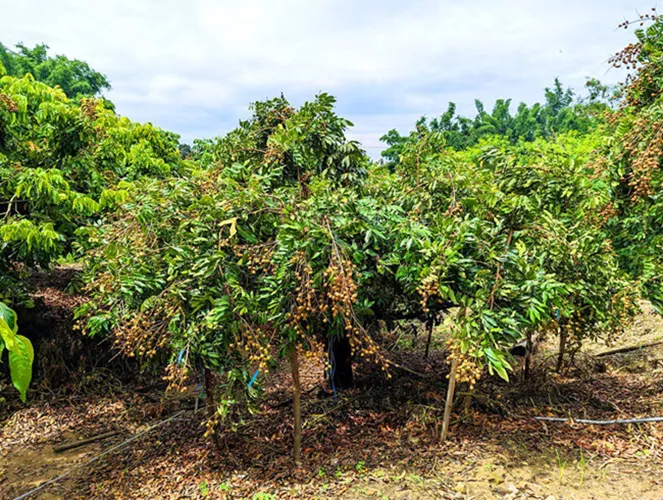The Taiwan Agricultural Research Institute’s Chiayi Agricultural Experiment Branch has developed an advanced flower induction method using potassium chlorate to boost longan production during warmer winters.
Longan is one of Taiwan’s top five fruit crops, with 10,437 hectares dedicated to cultivation and a total yield of 70,384 tonnes in 2023.
While longan has traditionally been a low-maintenance crop, known for its fast growth, high yield, and pest resistance, recent weather changes and global warming have led to a significant decline in flowering. This has caused a drop in harvests and reduced income for farmers. Poor flowering has also impacted honey production, as longan flowers are a major nectar source for bees in spring.
By using potassium chlorate to induce flowering, the rate of panicle formation during mild winters can be increased by 68 to 80 percent, the institute reports.
The technique was originally developed in 1998 by Yan Chang-jui, a researcher at the National Pingtung University of Science and Technology’s Department of Plant Industry. Yan noticed that longan trees near temples produced more fruit and discovered that potassium chlorate, a chemical used in firecrackers, could trigger flowering.
However, the method was not widely used at the time because potassium chlorate was classified as a controlled substance, making it difficult to access. Early attempts to apply the technique also had limited success, as the chemical was not effectively absorbed by the deep root systems of longan trees.
To address these challenges, the institute refined Yan’s method by reducing the amount of potassium chlorate used and applying it directly to the leaves rather than the soil. This change has improved the technique’s reliability, helping to stabilize flowering and yields, particularly during warmer winters.
Spraying the chemical in early spring, typically in the first half of February, can ensure timely flowering and consistent production, even after a warm winter. The method also allows for early flowering and harvests, helping farmers avoid a market surplus during the peak season and potentially increasing their income.
In addition to benefiting fruit growers, the technique supports the beekeeping industry, as longan blossoms are a key nectar source for bees in spring.
With further use, this method could play a vital role in helping Taiwan’s agricultural sector adapt to the challenges of climate change.
Related Topics:


